כללי
תחבורה
אנשים
אירוח
אוכל ושתייה
ביקור באתרים
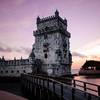 מה לראות בגרמניה?
מה לראות בגרמניה?
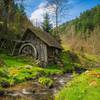 What to do in Germany?
What to do in Germany?
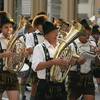 האם יש פסטיבלים בגרמניה?
האם יש פסטיבלים בגרמניה?
 What are the best tours to take in Germany?
What are the best tours to take in Germany?
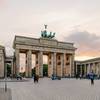 Is Berlin city card worth buying?
Is Berlin city card worth buying?
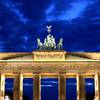 מהלך השנה לגרמניה משקיעים מספר ימים בברלין, באיזו דרך אפשר להנות מהעיר המון מבלי לשלם הרבה כסף?
מהלך השנה לגרמניה משקיעים מספר ימים בברלין, באיזו דרך אפשר להנות מהעיר המון מבלי לשלם הרבה כסף?
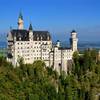 איך אני מגיע לטירת נוישוואנשטיין ממינכן?
איך אני מגיע לטירת נוישוואנשטיין ממינכן?
משפטי
כסף
בטיחות ובריאות
נסיעות משפחתיות
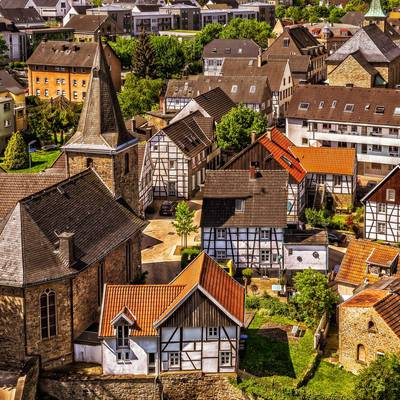
What smaller scenic towns in Germany to visit?
Germany isn’t just big cities like Berlin, Munich, and Frankfurt. The old, traditional Germany lies in smaller towns and villages, and if you want to explore the quieter, more reserved side of the country, make sure to visit these charming medieval small towns.
Quedlinburg. Could Quedlinburg be any more charming? This tiny town is located just north of the Harz mountains (under 3 hours ride from Berlin) in still evokes the Middle Ages today. Quedlinburg fortunately survived the war undamaged and is one of Germany’s best preserved medieval renaissance towns and has been named a UNESCO World Heritage Site. This town has an impressive political history, having been ruled by aristocratic women for 800 years as a semi-independent state. The rambling, cobblestoned streets snake their way around countless red-roofed half-timber houses – the perfect place to get lost for an afternoon.
Bamberg and the Bürgerstadt. Located in the valley of the Regnitz, where the river divides into two arms, Bamberg, the old imperial city and the most important town in Upper Franconia, is one of the best preserved of Germany's many charming old towns and one of the best to explore on foot. Your walking tour should begin in its old episcopal quarter, home to the 13th-century cathedral and the old Benedictine abbey of Michaelsberg. It's between the two river branches that you'll find spectacular Bürgerstadt, a small borough of Bamberg that contains the Grüner Markt, an excellent pedestrian zone, which is home to the 17th-century Baroque church of St. Martin and, to the north, the New Town Hall, or Neues Rathaus, built in 1736. Perhaps the town's most important structure, however, is the Old Town Hall, built on top of the Obere Brücke (Upper Bridge).
Trier. This is the oldest town in the country. With a 2000-year-old history, Trier was home to six Roman emperors and contains a number of impressive ancient ruins. The most outstanding example is by far the Black Gate – a monumental structure that was once part of the city walls. Nestled in the Moselle river valley, picturesque Trier is crowned with myriad vineyards and pastoral villages. It is very much an off-the-beaten-path destination.
Rothenburg ob der Tauber. The old Franconian imperial city of Rothenburg, one of the most attractive places on Germany's famous Romantic Road tourist route, lies on the steep banks of the picturesque River Tauber. With its walls and towers untouched since the Thirty Years War of 1618, this completely preserved picture-perfect medieval town offers endless charm. One of the most popular things to do here is to join a walking tour (or do it yourself); get started by picking up a map from one of the tourism offices located in the town. There are no end of opportunities to explore, with individual buildings of note include the imposing 13th-century Town Hall (Rathaus); the wonderful Ratstrinkstube, or Council Tavern, built in 1466 with its interesting clock; St.-Georgs-Brunnen fountain, built in 1608 near the end of Herrngasse; St. James's Church, with its fine high altar dating from 1466; and the Imperial City Museum. Simply walking the old streets past these beautiful buildings is a timeless experience, especially if it involves the Plönlein, one of the town's most picturesque spots.
Lübeck. Once in Germany, this UNESCO World Heritage Site is a must-visit city. The capital of the Hanseatic League has been the ‘City of the Seven Spires’ for centuries, towers of which decorate the Old Town even after a devastating bombing raid in the war times. Lübeck was founded in the 12th century and prospered until the 16th century as the major trading centre for northern Europe and has remained one ever since. The city is proud of its patrician residences, public monuments and attractions, salt storehouses and churches, among which are Gothic Lutheran Lübeck Cathedral and St. Mary’s Church, all of which have remained unaltered during the course of time. Beautiful medieval architecture, rich culture and delicious marzipan treats (especially in Café Niederegger which serves 100% pure marzipan) including marzipan-infused treats, such as tarts, cakes, beverages, liqueur and chocolates.
Lindau. German vacationers prefer their islands when it comes to a short break from the hustle and bustle of big cities. Lindau is located on Lake Constance, known as Bodensee in German and as Europe’s third biggest lake. The city borders two alpine countries, Austria and Switzerland and includes few islands with splendid beaches, medieval villages, castles and wine. Lindau is also proud of its fantastic harbour, guarded by a Bavarian lion and a lighthouse. The city’s Old Town area is full of medieval buildings, and many people take a guided boat tour to see the island from a different perspective and enjoy the impressive panorama. Lindau maintains a long tradition of maritime activities both in the harbour and on the promenade, regarded as one of the most attractive there. The city hosts many interesting sites as well, but we must highlight St. Peter’s Church (Peterskirche), the oldest church in Lindau, and Haus zum Cavazzen, considered to be the most beautiful house in the city.
Cochem. The small town of Cochem is one of the loveliest landscapes in Germany, nestled in the high vine-covered slopes of the Moselle Valley, which goes through two hiking areas, the Eifel and Hunsrück ranges, with a trail along the valley going through vineyards and past Medieval castles to Trier and Koblenz. The city’s most popular landmark is the Reichsburg Castle, over 1 000 years old standing on a hill overlooking the town. The castle is open to the public by guided tours, each lasting about 60 minutes. Center of Cochem’s happenings is at the Market Square, where you’ll find the charming St. Martin fountain and the baroque Rathaus from 1739. However, the best way to meet the town is by taking a tour with the Mosel-Wein-Express, a small street train full of information about the town. The ride takes 30 minutes and takes you through the Old Town, past the city gate Enderttor, to a viewpoint overlooking the city and the castle, along bunch of vineyards and so much more. It costs 4 EUR for adults and 2 EUR for children.
Ramsau. If you have ever wondered where the church from covers of most German brochures is, now you know it. St. Sebastian’s Church surrounded by a burbling mountain stream with an impressive view of the Alps in the background is a postcard picture describing Germany’s landscape in just one scene. However, this tiny church is not all there is to see in Ramsau. The nearby Hintersee Lake is a perfect place to spend some time in nature, whether it’s boating, strolling or something else. Its crystal clear waters and breathtaking surrounding are more than enough to realize why the lake is so popular among various artists. This small town has another treat, the Herbstfest (fall festival), when cows are brought down from the summer pastures to the lower areas, and get decorated and decked out with cowbells while their shepherds wear traditional Bavarian clothes. When you add Bavarian beer and sausages to that, it sounds fun, doesn’t it?
Meissen. Perched on the banks of the River Elbe, the 1000-year-old city of Meissen is indeed an incredibly enjoyable sight. The mighty Albrechtsburg Castle, built in the 15th century and considered to be Germany’s oldest castle, overlooks a picturesque Old Town, vineyards rolling one after another for as long as your eyes can see and a beautiful river valley. The splendid Gothic castle is accessible by foot or by the Panoramaaufzug Burgberg. Another thing the city has been famous for is the highest-quality porcelain, manufactured here before anywhere else in Europe and still pretty much in business after more than 300 years of production. If you’re interested, visit the Neoclassical Museum where you can observe amazing collection of porcelain items made over the course of time. Not to forget, the Meissen Cathedral is another Gothic masterpiece, definitely worth of your time, at least so you can say you’ve stepped foot in one of Europe’s smallest cathedrals.
Rüdesheim am Rhein. This is one of Germany’s most scenic wine regions which offers beautiful hikes through the mountains and breathtaking views over the Rhine river valley. And that’s not all. There's also one of the oldest castles in the region, the historic Brömserburg Castle, which dates back to more than a thousand years and houses a fantastic Rheingau Wine Museum, originally built as a castle for the archbishops of Mainz and provided home to many dynasties until its reconstruction in 1941 when it was turned into a museum. There are more than 2000 exhibits which offer you an insight into the wine production in different periods, from antique to modern times. Another must-see is the Abbey of St. Hildegard on a hill above the city, a monastery builts at the beginning of the 20th century in a Romanesque style, displaying architectural works and beautiful frescoes. After these tours, take a stroll along the Drosselgasse, a charming cobbled street filled with historic buildings, restaurants, bars and shops, ideal for a coffee or a meal.
Goslar. The city of Goslar is the heart of the Harz Mountain ranges in the country. Dating back for more than a 1 000 years, Goslar maintains a long, rich tradition of mining, the chronology of which you can see in the Rammelsberg Mining Museum. The city itself is a UNESCO World Heritage Site full of great activities and sights for visitors. One of the city’s most recognizable landmarks is the Imperial Palace, built in the 11th century, is open to public by tours during which you can see the amazing artwork in the upper floors. Despite being a small German town many people don’t know of, Goslar is home to many lovely churches, such as Frankenberger Kirche built in the 13th century in Gothic, Baroque and Romanesque style, and Gustav Adolf Stave Church, a a Nordic-style stave church really standing out in Lower Saxony. We must mention the Zwinger Tower as well, a remnant of the ancient fortifications of the city, used to control the approaching enemies and to prevent attacks on the city. The site today is a restaurant, a guest house and a small museum with a collection of medieval weapons.

מה ניתן להביא מגרמניה הביתה?

מה ניתן לאכול בגרמניה בתור צמחוני?

מהם ההגבלות הקיימות לגבי צריבת אלכוהול?

איפה אני יכול להחליף מטבע?

איך אני יכול לחסוך כסף בטיול שלי לגרמניה?
